Your website holds valuable content, but some of your best resources – detailed guides, insightful whitepapers, comprehensive brochures, visual portfolios – might be locked away in PDF format. Making visitors download files creates friction and pulls them away from your site. What if you could display those PDFs directly within your webpages?
You absolutely can! Learning how to embed a PDF on your website allows you to present rich documents seamlessly, keeping users engaged and providing instant access to information.
This guide explores various methods, from simple HTML techniques to using powerful tools like Poper for ultimate control over placement, appearance, and management.
Why Embed PDFs Instead of Just Linking?
Keep Users On-Site: Visitors consume the content without leaving your page.
Seamless Experience: Integrates naturally with your website layout.
Instant Access: No need to download, wait, or open a separate application.
Showcase Resources: Effectively display reports, guides, menus, portfolios, and more.
How to Embed PDF on Website
Step 1: Get Your Poper Account Ready
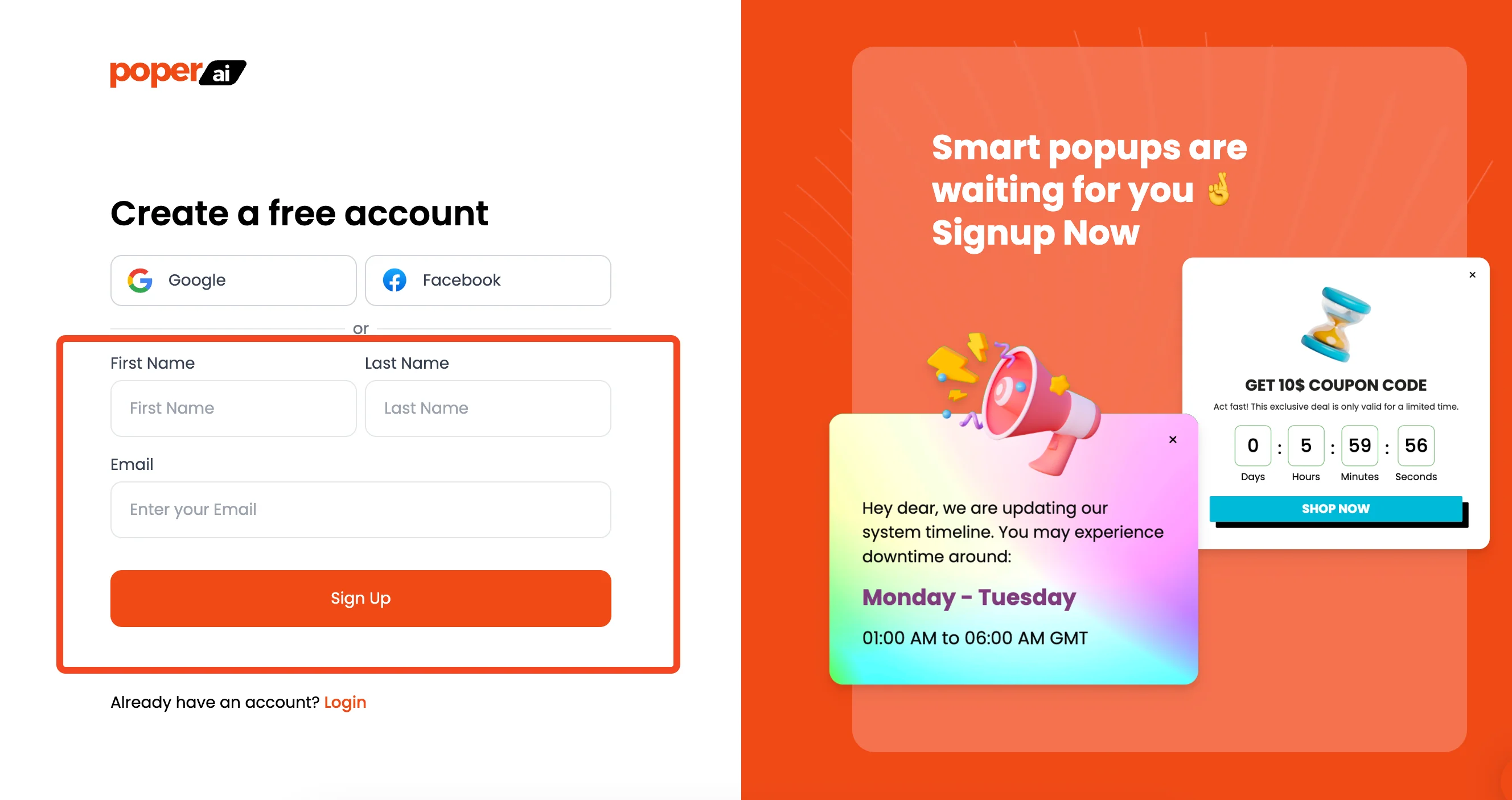
First things first, if you haven't already, sign up for a Poper account. Once you're in, head over to your dashboard and add the domain name (your website URL) where you want the PDF embed to appear. This tells Poper where to work its magic.
Step 2: Start a New Embed Campaign
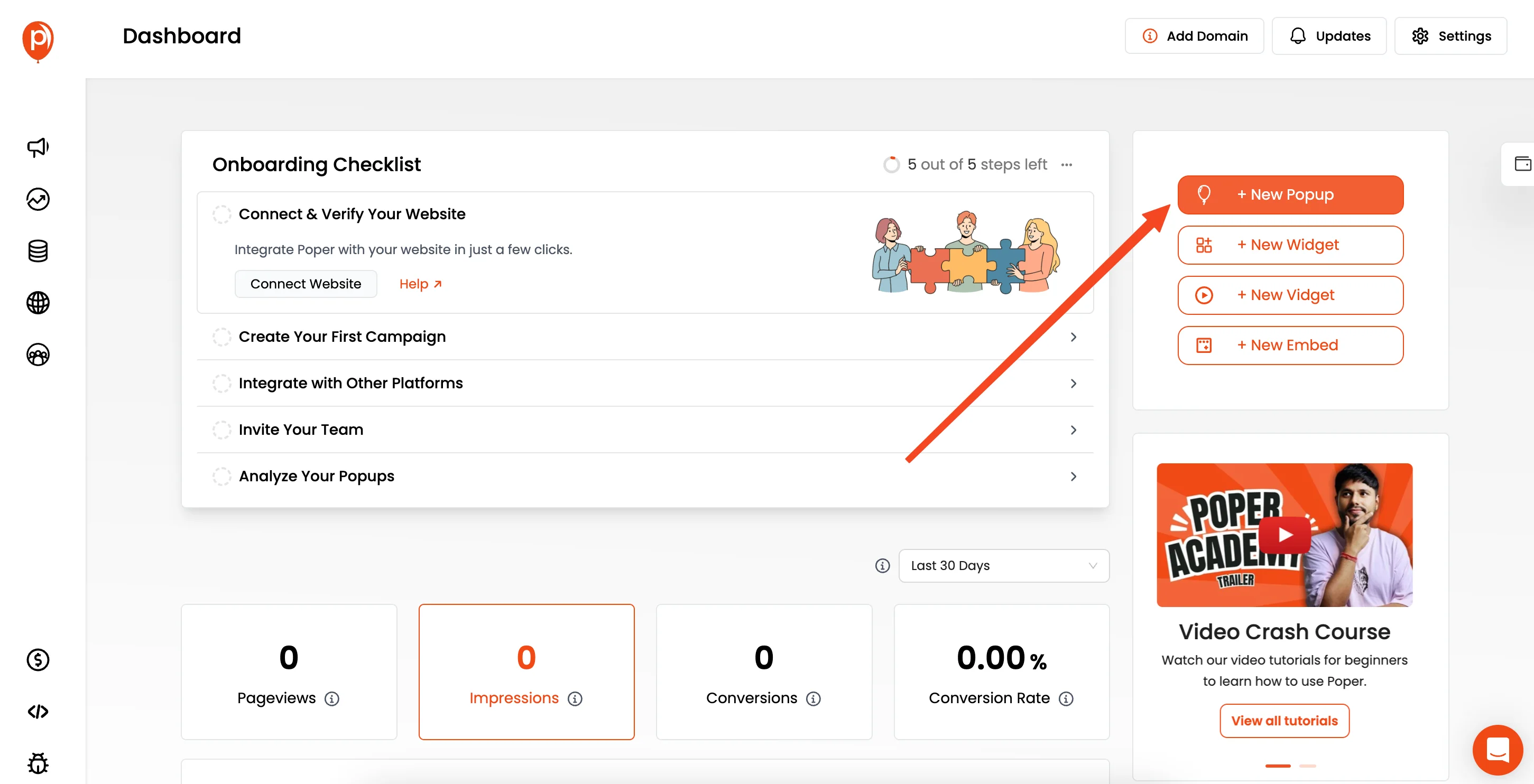
Now, let's create the embed itself. Find the button to create a new campaign – it might say something like "New Popup".
When prompted, choose the option to "Start from Scratch". This gives us a blank canvas to work with, perfect for adding custom elements like our PDF.
Note: Don't worry, you can change from Popup to Embed later. We chose popup as it has "Start from Scratch" option.
Step 3: Add an HTML Element

Inside the Poper editor, look for the sidebar, usually on the left. Find an "Add" tab or button. Clicking this reveals all the different content blocks you can add. Select the "HTML" element. I included this element specifically so you can add custom code snippets like the one we'll use for the PDF.
Step 4: Paste and Edit the PDF Embed Code
Now, we need the code that actually displays the PDF. You'll use a simple HTML structure combined with a handy script called PDFObject. Copy the code block below.
<style>
.pdfobject-container { height: 500px; border: 1px solid #ccc; }
</style>
<div id="my-pdf"></div>
<script src="https://unpkg.com/pdfobject"></script>
<script>PDFObject.embed("your-pdf-url", "#my-pdf");</script>
Paste this entire code block into the HTML settings field that appeared when you added the HTML element in the previous step.
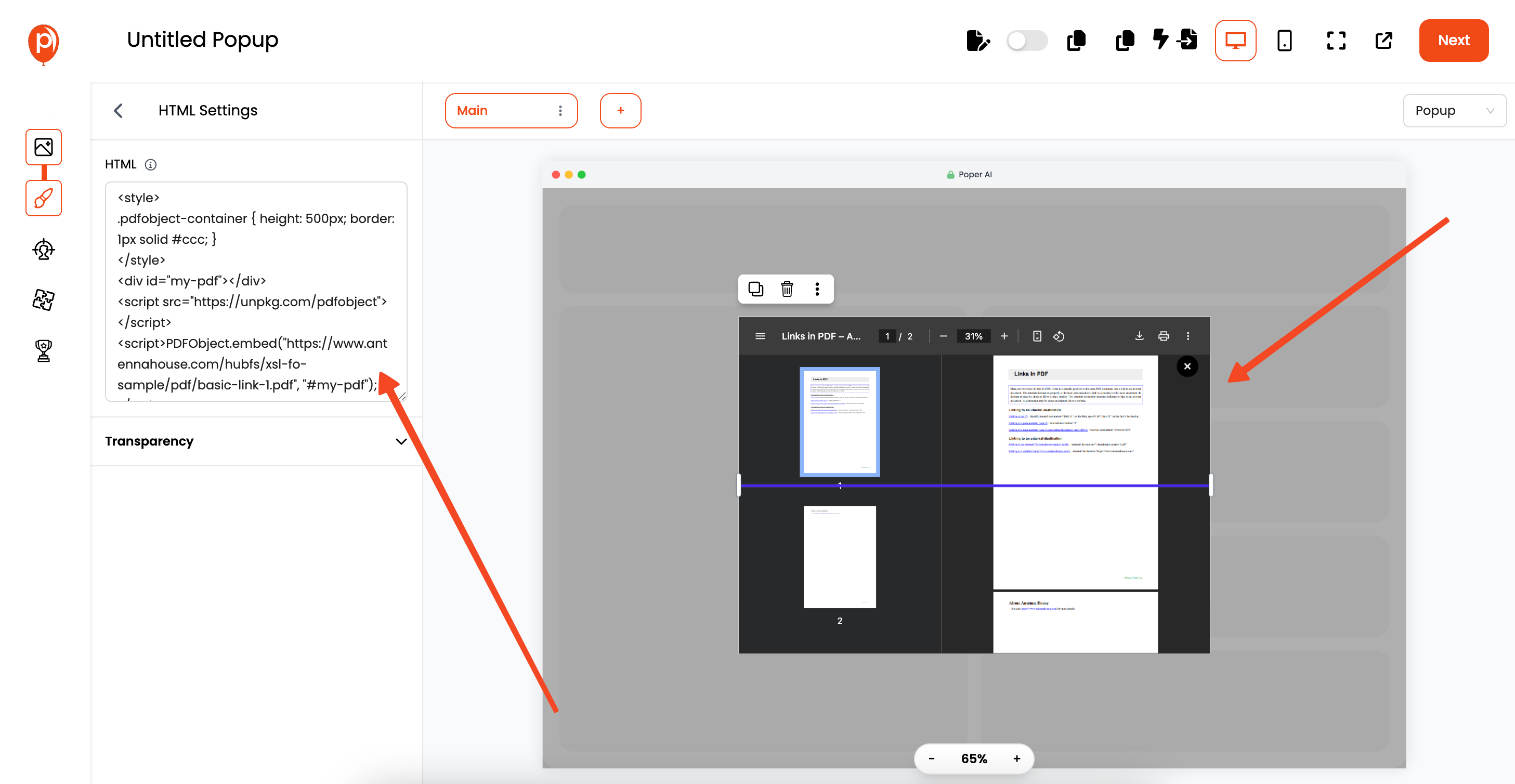
The crucial part is replacing "your-pdf-url" with the actual web link (URL) to your PDF file.
Make sure the PDF is hosted somewhere publicly accessible (like your website's media library, Google Drive, Dropbox, etc.).
Step 5: Position Your PDF Embed
You'll see a placeholder for the HTML block you just added appear on your Poper canvas.
Drag this block and position it where you want the PDF viewer to sit within the embed frame.
Step 6: Fine-Tune the Appearance (Optional)
If you want smoother edges, you can adjust the container's appearance. Navigate to the embed's general style settings, often found under a tab like "Global Settings" or "Design".
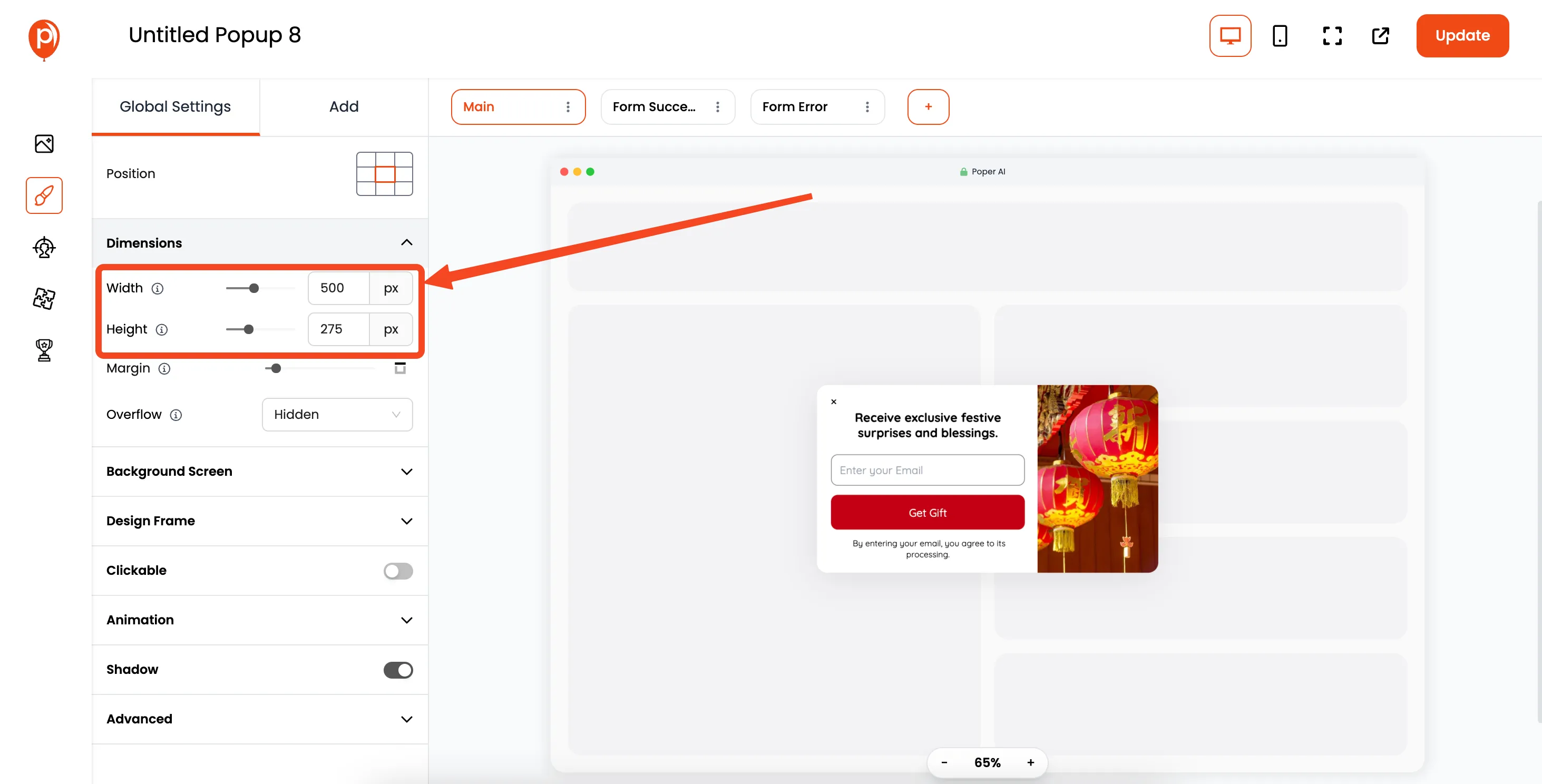
Look for "Dimensions" or "Style" options and find the "Overflow" setting. Setting this to "hidden" can help if you're applying rounded corners to the embed container itself.
Step 7: Switch Your Campaign Type to Embed
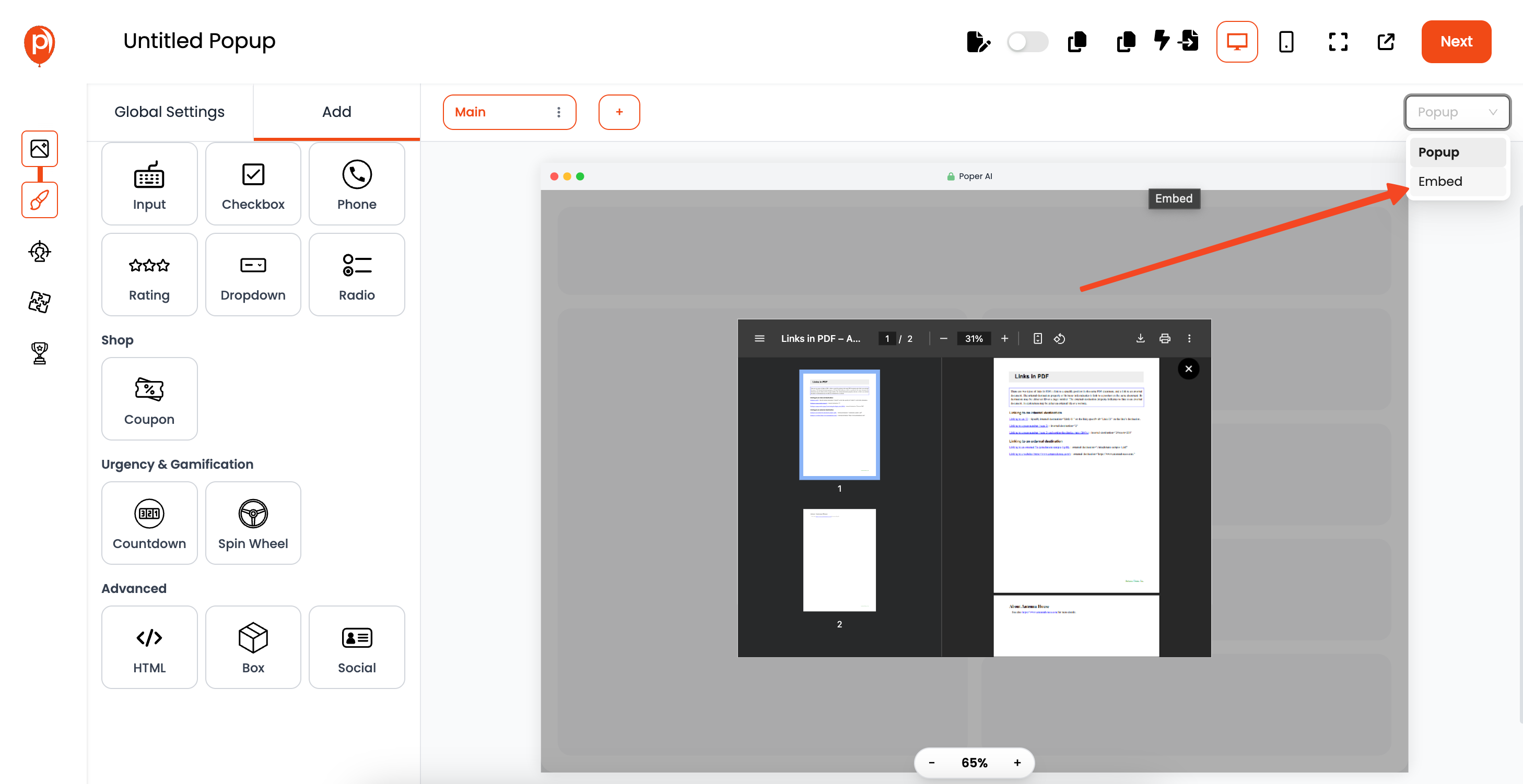
Since we don't want this showing up as a popup, we need to tell Poper it's an embed. Look for a dropdown menu, likely near the top right of the editor, that lets you choose the campaign type.
Select "Embed" from the options. This ensures it slots directly into your page content flow.
Step 8: Set Your Display Conditions
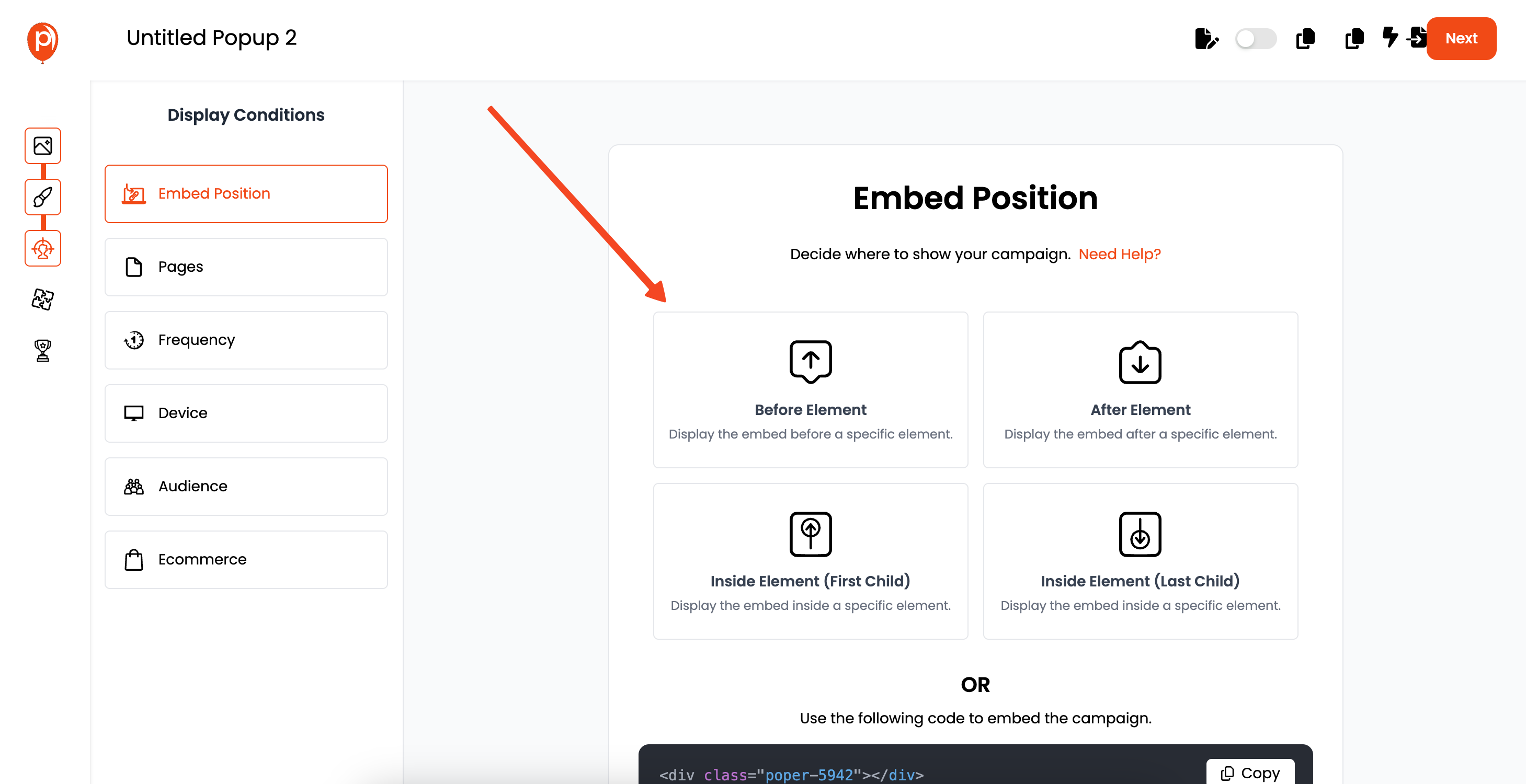
Click "Next" or navigate to the "Display Conditions" or "Embed Position" section. Since this is an embed, you'll likely want it to show at specific location. You can usually set this using CSS selector.
Poper also lets you target specific pages or audience segments if you only want the PDF embed to show up under certain conditions.
Step 9: Save and Publish Your Work
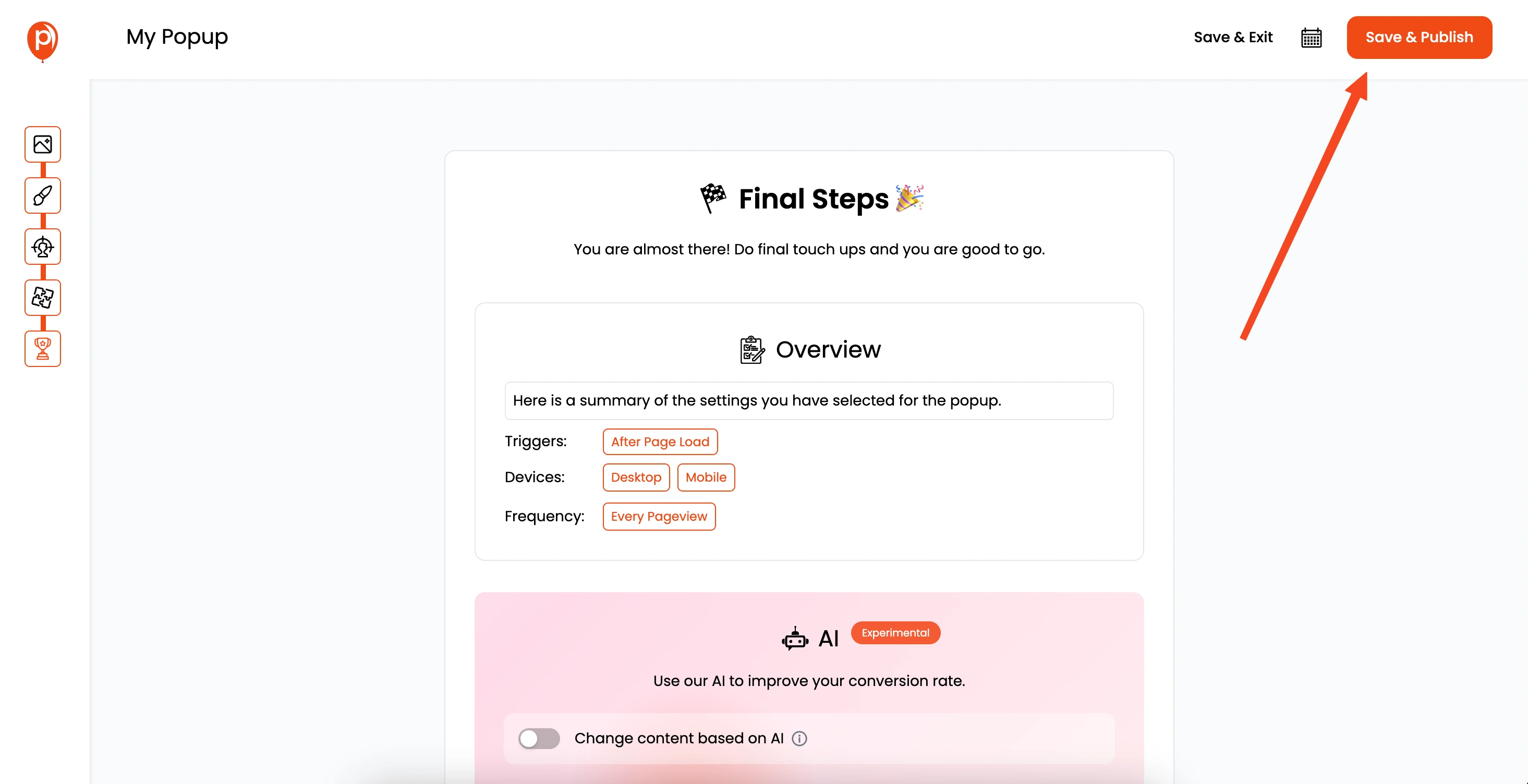
Once you're happy with the setup and how the embed looks in the preview, hit the "Save" or "Publish" button. This makes your embed live and ready to be placed on your site.
Step 10: Install the Poper Code on Your Website
Now for the final connection. Poper needs a small snippet of code installed on your website to display the campaigns you create. Navigate to the "Code" or "Installation" section in your Poper dashboard.
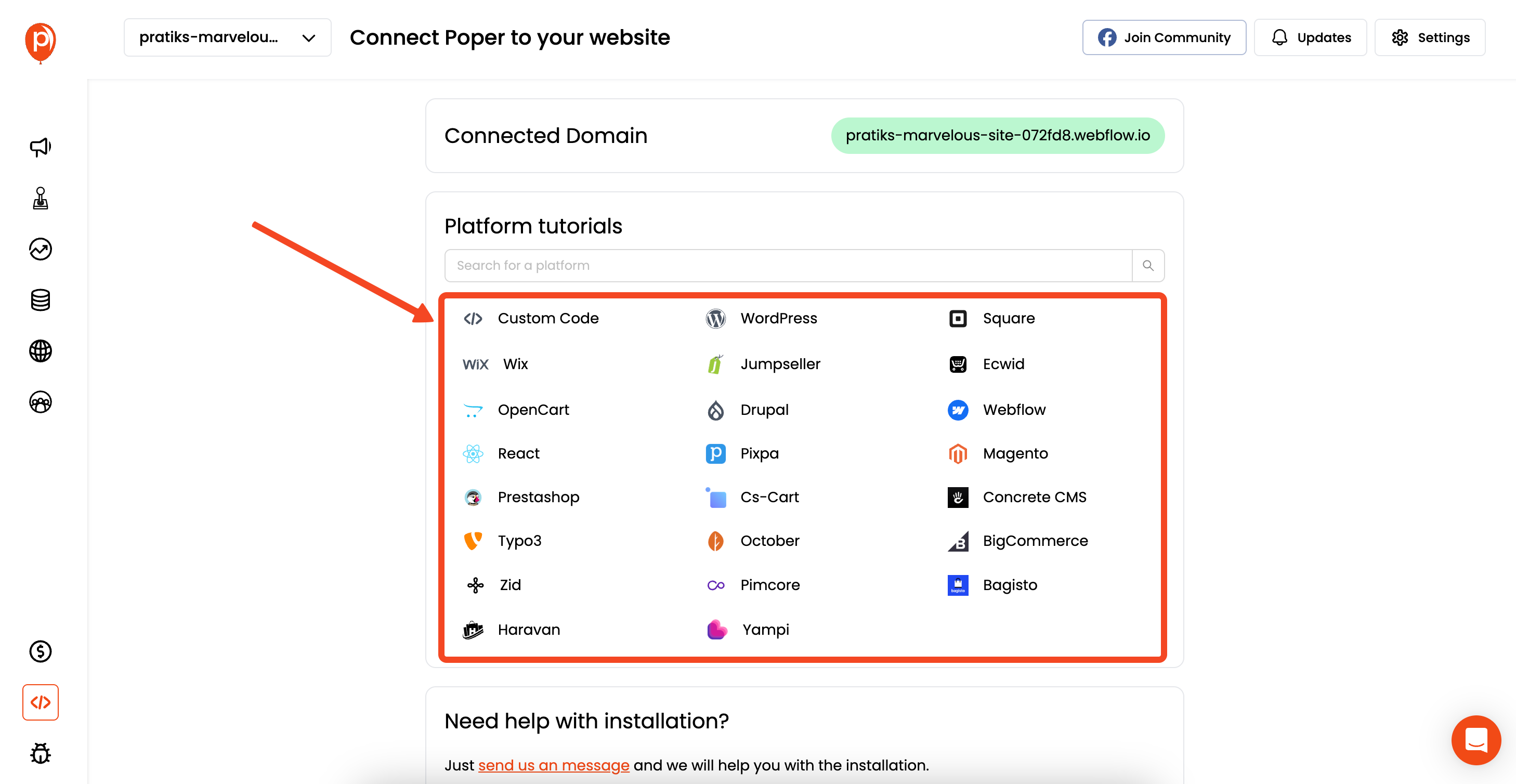
Select your website platform (like HTML, WordPress, etc.) and follow the simple instructions to add the Poper script to your site template, usually just before the closing </body> tag. You only need to do this once per website.
Step 11: Test It Out on Your Live Site
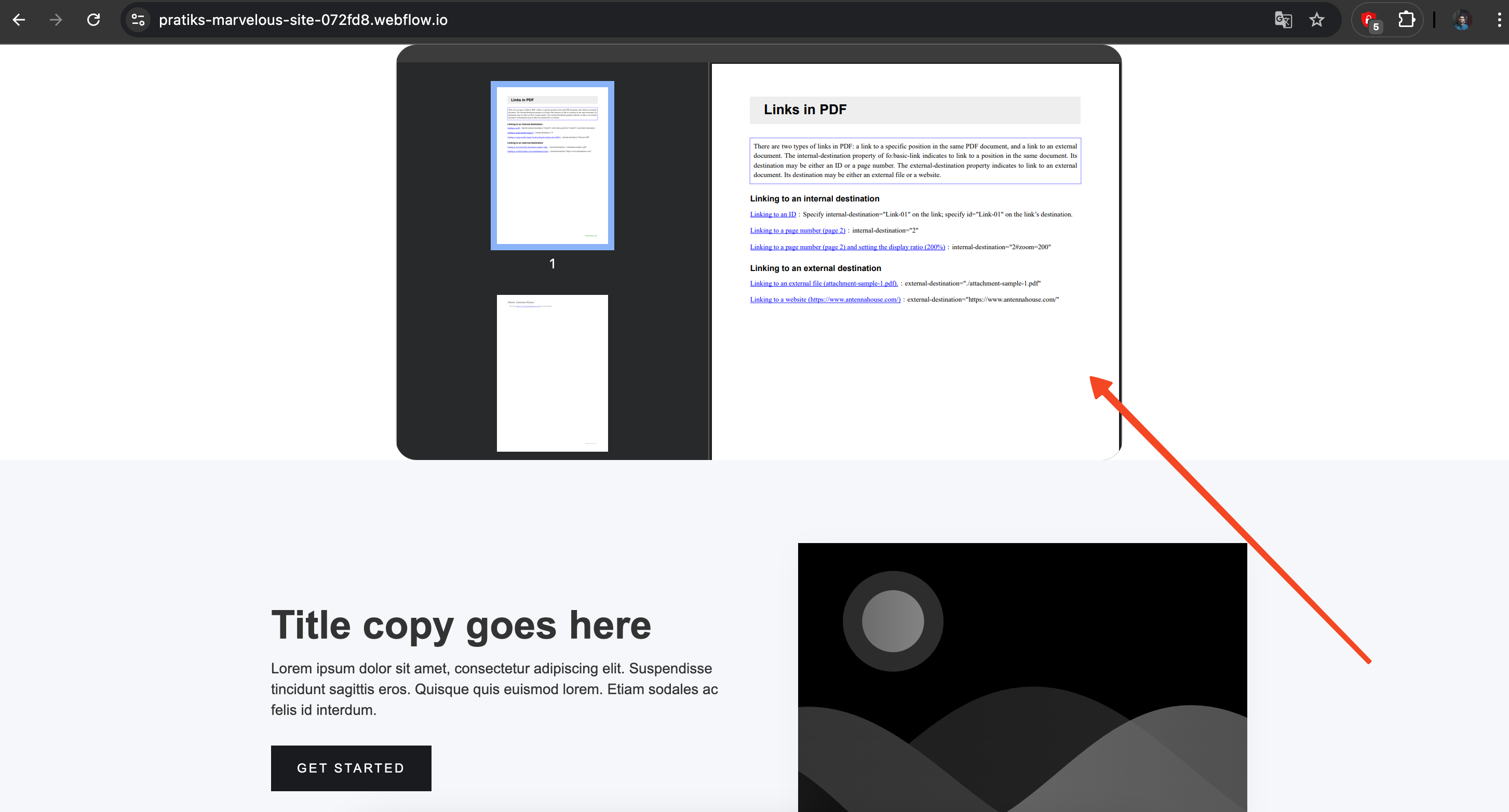
After adding the Poper code to your website and publishing your PDF embed campaign, visit the specific page where you targeted the embed to appear.
You should see your PDF viewer load right in the spot you designed for it. Make sure it looks and works as expected!
That’s it! You’ve successfully embedded a PDF using Poper’s HTML element. It’s a great way to make important documents easily accessible to your visitors. Let me know if you run into any snags!
Advantages of Using Poper for PDF Embeds:
No-Code Placement: Use CSS selectors for precise positioning.
Container Styling: Easily add borders, padding, etc., around the PDF viewer via the Poper editor.
Central Management: Update or manage all your Poper embeds from one dashboard.
Targeting Options: Optionally show embeds only on specific pages or to certain audiences.
Consistency: Ensures embeds are handled uniformly across your site.
Tips for Successful PDF Embedding
Optimize PDF File Size: Large PDFs slow down loading. Compress your PDFs before uploading using online tools or Acrobat Pro.
Ensure Public Accessibility: Double-check that your PDF URL is publicly viewable (not restricted by permissions).
Provide Context: Add introductory text before the embed explaining what the PDF contains.
Offer a Download Link: Always provide a separate, standard download link as a fallback or alternative for users who prefer it.
Mobile Experience: Test how the embed looks and functions on mobile devices. Scrolling within an embedded frame can sometimes be tricky on small screens. Adjust height/width or consider linking only on mobile.
Accessibility: Remember that embedded PDFs might pose accessibility challenges for screen reader users. Ensure the core information is also available in standard HTML on your site where possible, and provide descriptive context and download links.
Conclusion: Bring Your PDFs to Life Online
Stop hiding valuable PDF resources behind download links. Learning how to embed PDFs on your website transforms them into integrated, accessible content.
Whether you use simple HTML tags (<embed>, <object>, <iframe>) for basic display or leverage a tool like Poper for advanced control over placement, styling, and management, embedding offers a vastly superior user experience. Choose the method that best suits your technical comfort level and desired level of control.
Frequently Asked Questions (FAQs) about Embedding PDFs
Can I embed a PDF stored on my computer directly?
No, the PDF must be uploaded to a web server or cloud storage service that provides a publicly accessible URL. You cannot directly link to a file path on your local computer (e.g., C:\Documents\myfile.pdf).
How do I make the embedded PDF responsive?
Use percentage-based widths (e.g., width="100%") in your embed code. The height is often fixed in pixels (height="600px"), as PDFs have defined page sizes. For better responsiveness, you might need CSS media queries on the container element (either your site's own container or the Poper element) to adjust the height or even hide the embed on very small screens, offering a download link instead.
Will search engines like Google index the content of my embedded PDF?
Yes, Google can crawl and index the text content within PDF files. Embedding it on your page makes it discoverable through that page. Ensure your PDF content is high-quality and relevant.
Can I track how many people view the embedded PDF?
Standard HTML embeds don't offer reliable view tracking for the PDF content itself. If you use Poper, Poper's analytics will track how many times the Poper campaign (containing the PDF embed) was viewed or displayed, but not specific interactions inside the PDF viewer (like scrolling to page 5). For detailed PDF analytics, you'd typically need specialized document tracking services.
Why would I use Poper just to embed a PDF if HTML tags work?
Use Poper when you need more than basic embedding:
* Easy No-Code Placement: Precisely position the embed using CSS selectors without editing theme files.
* Container Styling: Visually add borders, backgrounds, padding around the PDF viewer.
* Central Management: Easily update or remove embeds across your site from one dashboard.
* Targeting: Optionally show the embed only on certain pages or to specific visitors.


